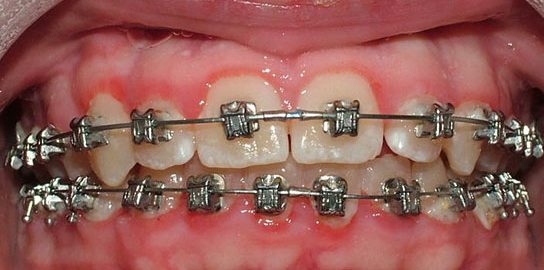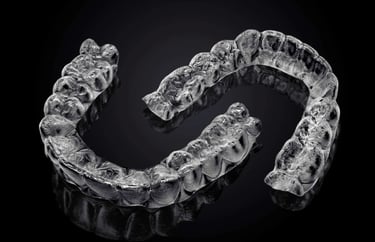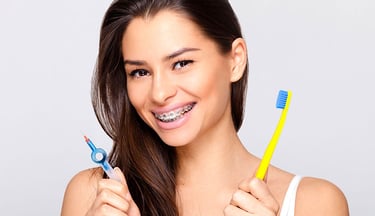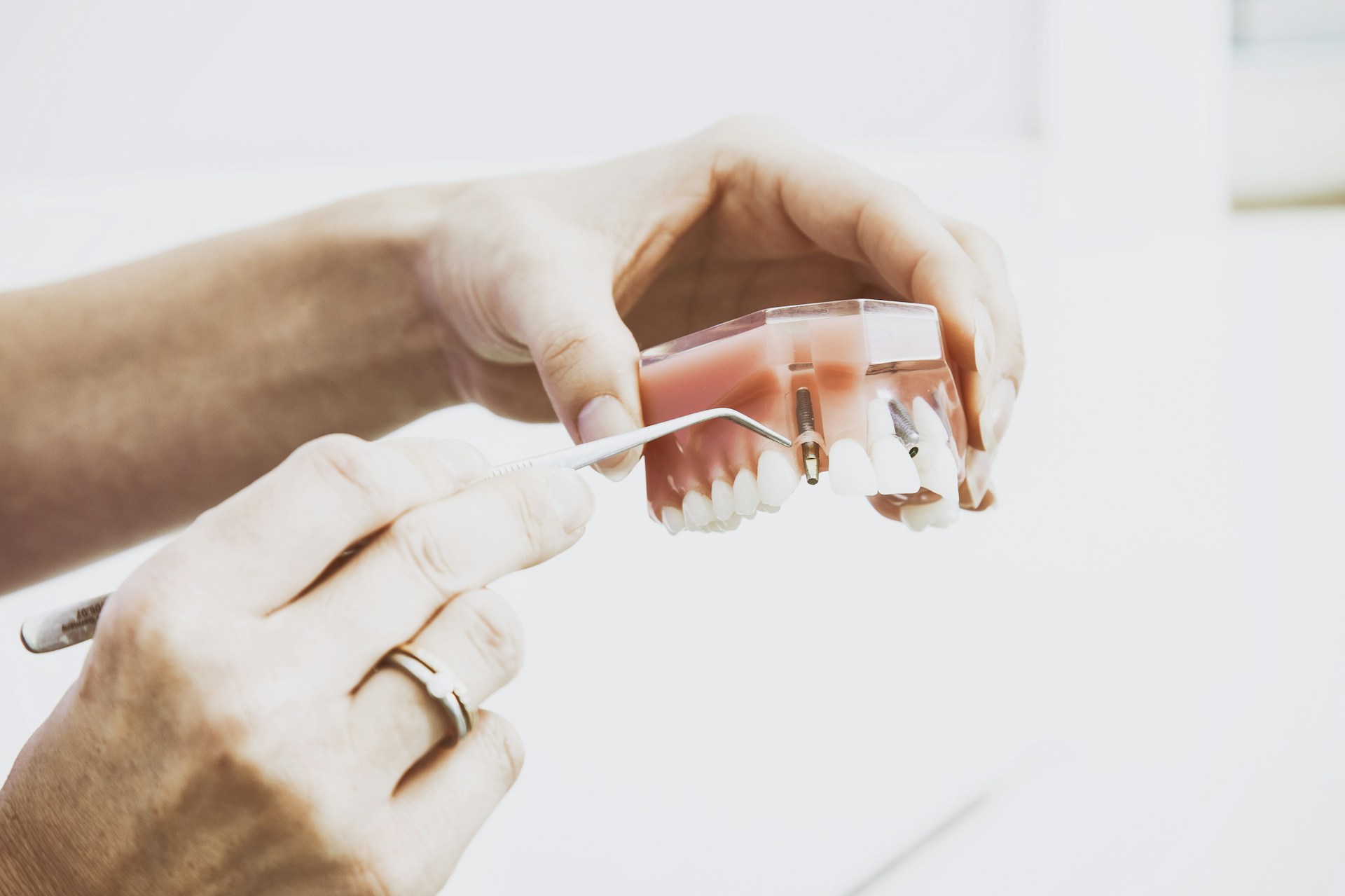Dealing with Swollen Gums from Braces
Swollen gums are a common side effect of wearing braces. Learn how to minimize gum swelling during an orthodontic treatment with proper oral hygiene and home remedies.
6/27/20244 நிமிடங்கள் வாசிக்கவும்


Understanding the Causes of Swollen Gums with Braces
Wearing braces is a common orthodontic treatment, but it often comes with certain challenges, including swollen gums.
▶ One primary factor contributing to swollen gums while wearing braces is the physical presence of the braces themselves. Brackets and wires can irritate the delicate gum tissue, leading to inflammation and swelling. This irritation is often more pronounced during the initial stages of wearing braces as the mouth adjusts to the foreign objects.
▶ Poor oral hygiene is another significant contributor to swollen gums. Braces create numerous nooks and crannies where food particles and plaque can become trapped.
If not properly cleaned, these areas can harbor bacteria, leading to gum inflammation and swelling. It is crucial for individuals with braces to maintain a rigorous oral hygiene routine, including regular brushing and flossing, to prevent plaque accumulation and subsequent gum issues.
▶ The body's natural response to having a foreign object in the mouth, such as braces, can also play a role in gum swelling.
The immune system may react to the braces as a potential threat, resulting in increased blood flow to the gums and causing them to swell. This is a normal physiological response but can be managed with proper care and attention.
▶ Orthodontic adjustments, a routine part of braces treatment, can also temporarily increase gum swelling. As the orthodontist tightens the braces to move the teeth into new positions, the pressure exerted can cause the gums to react and swell.
This swelling is usually temporary and subsides as the gums adapt to the new alignment of the teeth.
Effective Gum Care Practices While Wearing Braces
Maintaining optimal gum health during orthodontic treatment is paramount to ensuring a successful outcome and preventing potential complications. Daily oral hygiene routines tailored for braces wearers are essential.
▶ Start by brushing your teeth twice daily using a soft-bristled, orthodontic toothbrush, which is designed to clean around braces effectively. Position the toothbrush at a 45-degree angle towards the gumline and use gentle, circular motions to dislodge food particles and plaque from around brackets and wires.
▶ Incorporating an interdental brush or a water flosser into your routine can significantly enhance your oral hygiene. An interdental brush, with its small, cone-shaped head, can access hard-to-reach areas between braces and teeth, reducing the risk of gum inflammation.
▶ Alternatively, a water flosser uses a stream of water to remove debris and bacteria from around braces and between teeth, providing a thorough clean without the risk of damaging orthodontic appliances.
▶ Regular flossing remains a cornerstone of gum care, even with braces. Utilizing floss threaders or specialized orthodontic floss can simplify the process. Floss threaders help guide the floss beneath the archwire, enabling you to clean between teeth effectively.
Orthodontic floss, which is stiffer at one end, can also navigate around braces with ease, ensuring that plaque and food particles are removed from areas where a toothbrush cannot reach.
▶ Using an antimicrobial mouthwash can further reduce bacterial buildup and inflammation. Rinsing with a mouthwash containing antibacterial agents helps to kill harmful bacteria, promote gum health, and freshen breath.
▶ Regular dental check-ups and professional cleanings are crucial for monitoring gum health throughout orthodontic treatment.
Your dentist or orthodontist can identify early signs of gum disease, provide targeted advice, and perform cleanings to remove stubborn plaque and tartar. These appointments are vital in preventing serious complications and ensuring that your gums remain healthy while you achieve a straighter smile.
Home Remedies and Professional Treatments for Swollen Gums
Swollen gums can be an uncomfortable and concerning issue for individuals with braces. Fortunately, there are several home remedies and professional treatments that can help manage and reduce gum swelling.
▶ One of the simplest and most effective home remedies is a salt water rinse. Dissolving a teaspoon of salt in a glass of warm water and rinsing the mouth with it several times a day can help reduce inflammation and kill bacteria.
▶ Additionally, applying a cold compress to the affected area can provide temporary relief by numbing the pain and reducing swelling.
While home remedies can be effective, there are instances when professional treatment is necessary. If gum swelling persists or worsens, it's essential to seek help from an orthodontist or dentist.
Professional treatments may include prescription medications, such as antimicrobial mouthwashes or antibiotics to address underlying infections. In more severe cases, dental procedures like deep cleaning or scaling and root planing may be recommended.
These procedures involve the removal of plaque and tartar from below the gum line, promoting healthier gums and reducing inflammation.
By integrating these strategies, individuals with braces can ensure their gums remain healthy and their orthodontic treatment progresses smoothly.
Proper invisalign aligner care
Invisalign aligners have become a popular choice for orthodontic treatment due to their convenience and discreet appearance. To ensure the success of your treatment and maintain good oral health, it is important to take proper care of your Invisalign aligners. In this article, we will discuss some essential tips on how to take care of your Invisalign aligners for better oral health....




How To Brush With Braces?
Wearing braces is a common orthodontic treatment that helps align teeth and create a beautiful smile.
However, it's important to maintain good oral hygiene during this time to prevent tooth decay, gum disease, and other dental issues.
Brushing and flossing become a bit more challenging with braces, but with the right techniques and oral care products, you can keep your teeth and braces clean and healthy...

Contact Smiles
drdeepi15@gmail.com
Have doubts ..?
